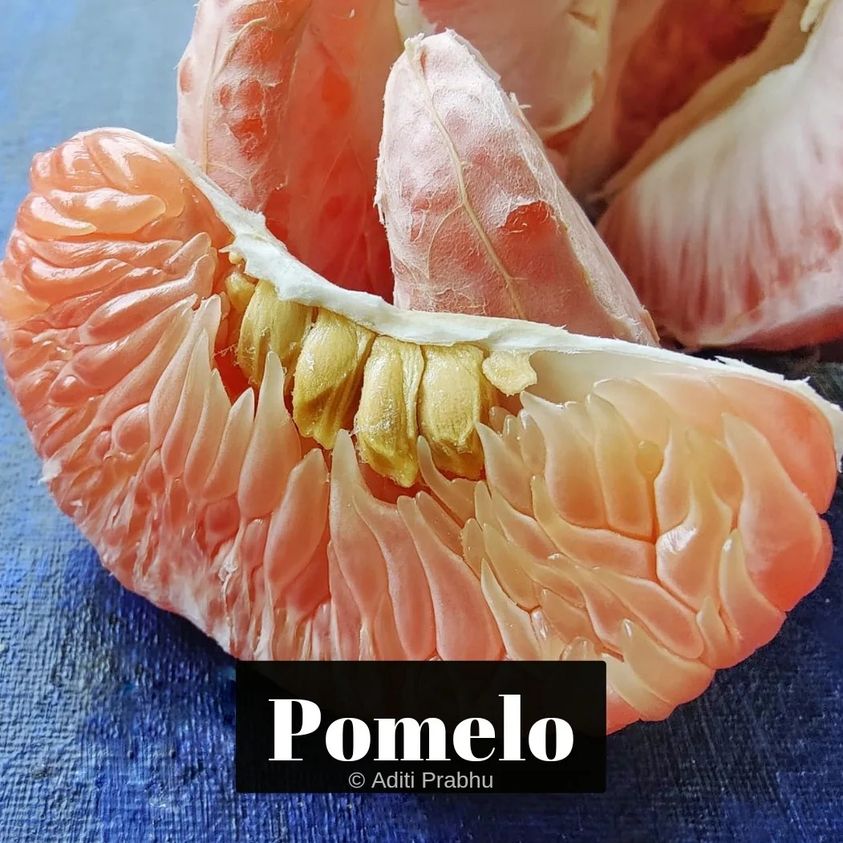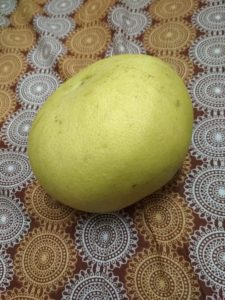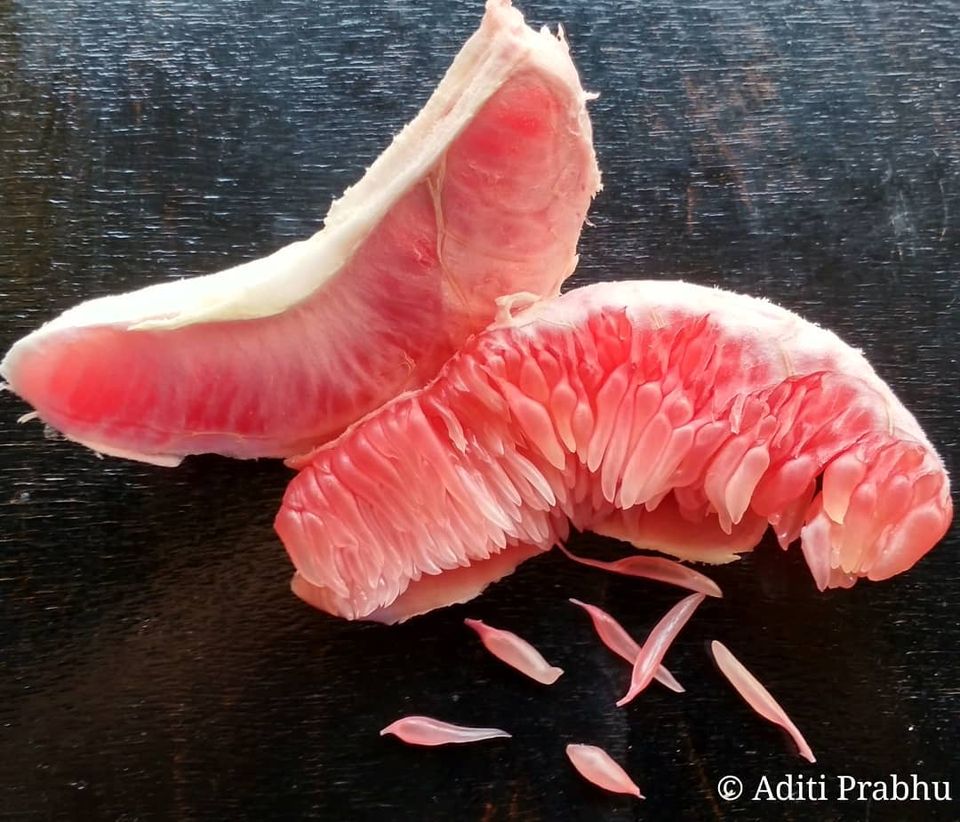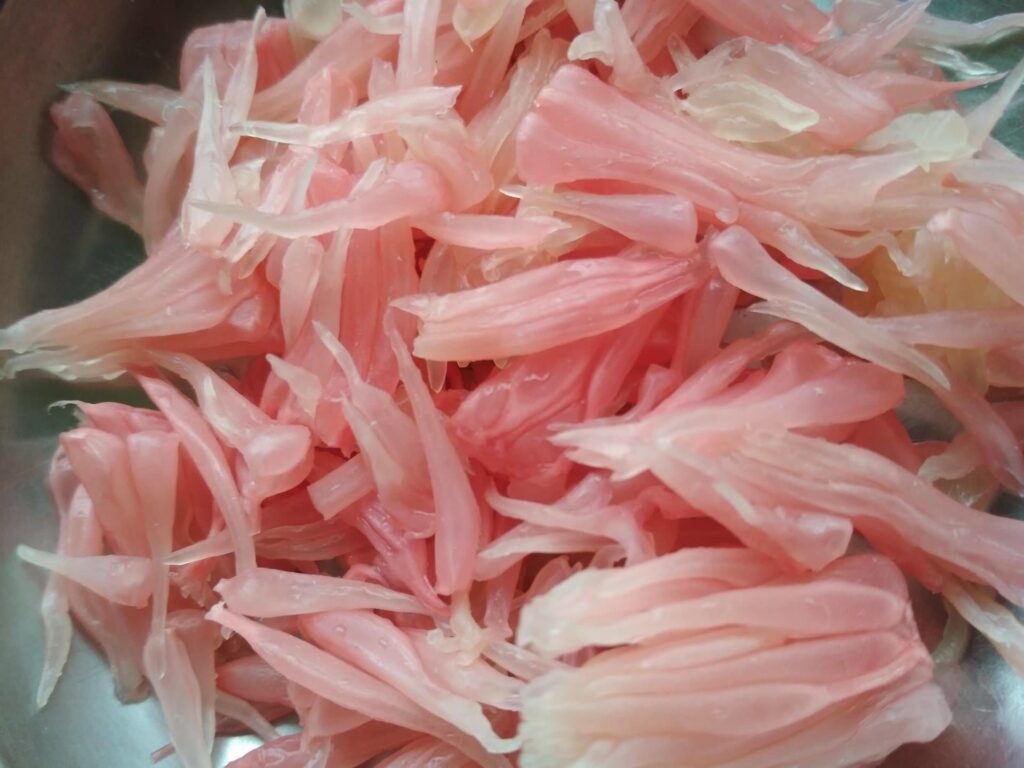Pomelo tree grows right in front of my house in my hometown in Kokan. It is a huge tree and bears equally huge fruits. As a kid, it always made me wonder as to how the Pomelo/papnus could stay up there hanging on a single thin stem. Also, why the only person who would be excited about the fruits was my grandpa, and while everyone disliked it because of it sour and tangy taste.
About Pomelo:
Pomelo looks like the elder sibling of citrus fruit and comes from the citrus family. It is a huge fruit at times as large as watermelon and has an equally thick skin. The skin color is usually green to yellowish-green and the inside is light to dark pink. Then there is the variety which is white/yellowish inside. It can stay up to 10-12 days after it’s plucked.
Taste:
It has a sweet tangy sour and slightly bitter kind of taste.
Other names:
Indian grapefruit ( English), Papnus (Marathi), Pampa Limasu (Tamil), Jabong
Availability:
It usually grows in the month of November-January.
How to Purchase and Store it?
Choose the fruit that has yellowish skin and is heavy. It stays out for days till it ripens. Once it is peeled it can be kept in the fridge for days.
Nutritionally speaking,
- It is a rich source of vitamins A & C and fiber. It also contains riboflavin, niacin, folate, potassium, magnesium, manganese, and zinc.
- Though this Indian Grapefruit has benefits, consume it with caution.
Culinary Usage:
- Papnus/Indian Grapefruit can be consumed just as it is.
- Salad.
- Juices
- Marmalades
References:
- https://hort.purdue.edu/newcrop/morton/grapefruit.html
- https://www.cropsreview.com/pummelo.html
- https://www.ncbi.nlm.nih.gov/pmc/articles/PMC3876074/
- https://www.ncbi.nlm.nih.gov/pmc/articles/PMC4778338/



